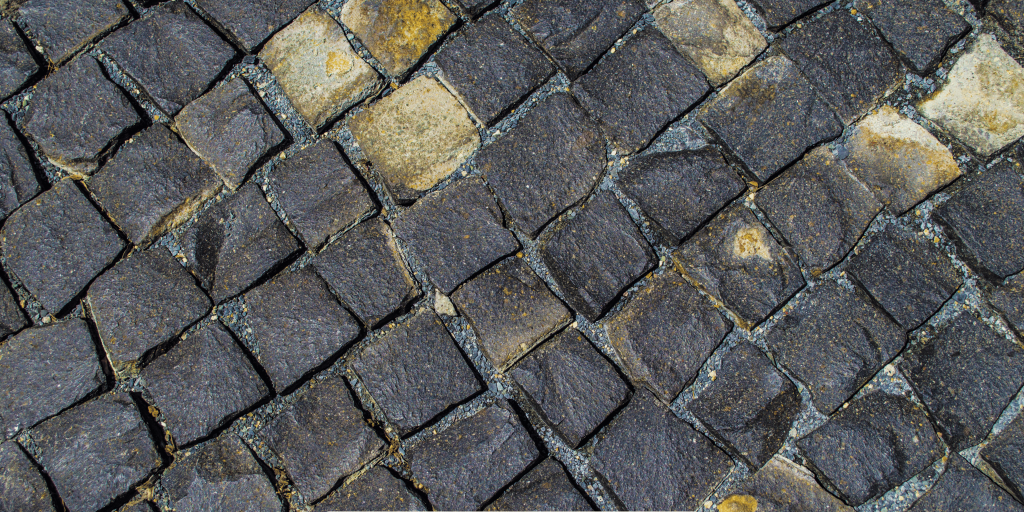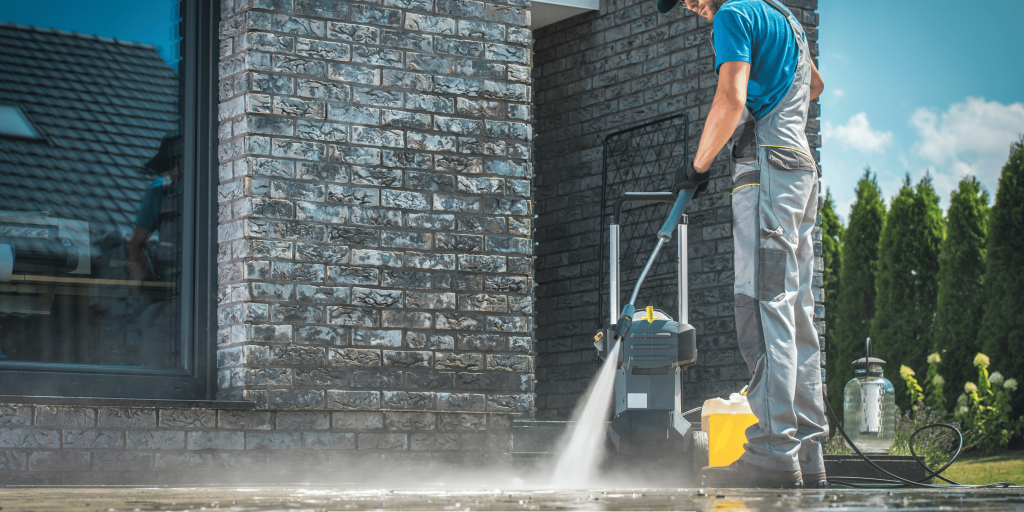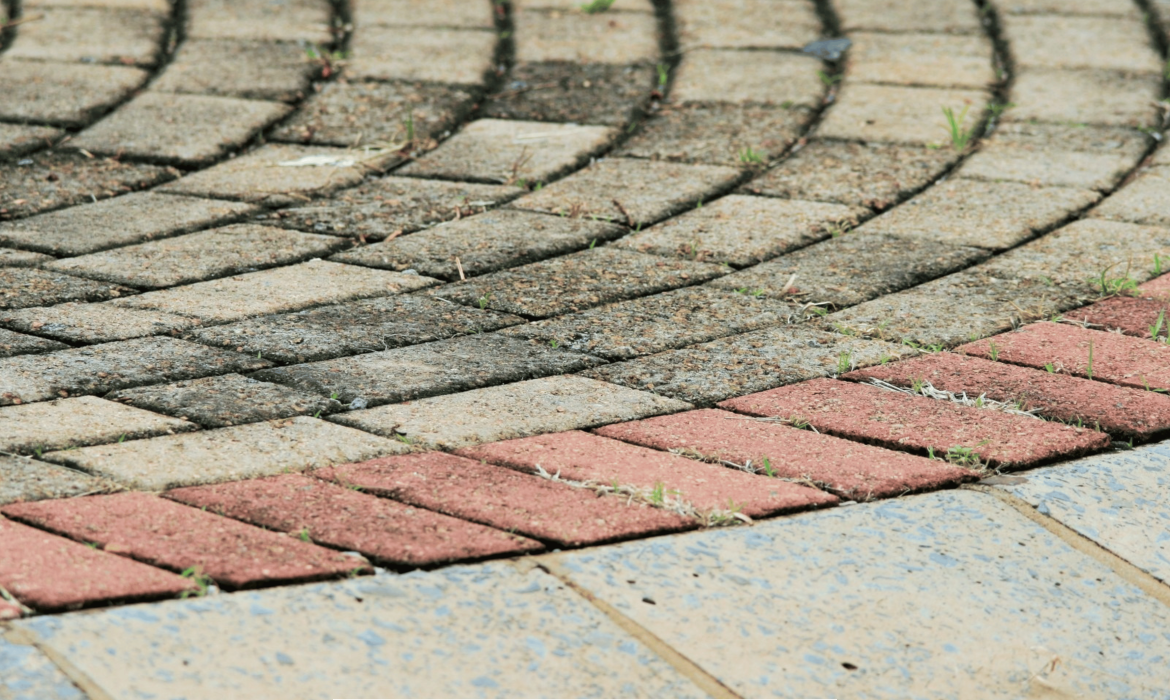Concrete stonework can develop black patches, which spoil the appearance and make paved areas look unattended. These spots are primarily fungal in origin and may arise from mold, mildew, algae, or lichen growing on the face of the stone. Though relatively hard to remove, here are some steps to clean and bring life back to your stone paving.
Causes of Black Spots
It may be helpful to know what brings the black spots in the first place before delving into the solutions.

Mold and Mildew
Both mold and mildew are formed due to moisture trapped on the stone’s surface. For mold colonies to be formed, there must be shaded areas, poor drainage, and infrequency of cleaning.
Algae
Another thing is that algae thrive in areas with moisture and do not get washed properly. Surfaces that remain wet for long periods are favorable for algae building.
Lichen
Lichen is algae and fungus and appears as a black crust on the skin’s surface. Immensely several germs love it, particularly those that grow on natural stone.
Prevention
Preventing black spots from forming or returning involves maintaining clean, dry stone as much as possible:
• Sweep pavements of debris often
• It is recommended that a leaf blower be used to clear the leaves and other related organic matter.
• Provide healthy drainage and adequate ventilation around the area
• Consistently use simple biological solutions
The idea here is that if you are watchful, you can contain or prevent many black areas from occurring in the first place or getting worse.
Cleaning Methods
When you already have black spots, here are methods for removing them:
Pressure Washing
Most black spots should be washed off using a power washer with a minimum of 3,000 PSI. Maintain a six to twelve inches distance from the paving surface through the support nozzle and make uniform and smooth strokes.
Finally, it should remain dry, and a sealer or any treatment products should be applied. Some types of natural stone will begin to give way when subjected to abrasive pressure washing. Remember always to test on a small spot of the skin first.

Chemical Cleaners
Outdoor stone cleaners and mold/mildew removers can effectively eliminate black spots. Choose products based on alkalis rather than acids, which can treat chemicals in contact with stones.
Squirt the cleaner with a pump sprayer. This should stand for 5-10 minutes before scrubbing with a brush. Rinse thoroughly with a hose. Protect your skin and eyes when dealing with chemicals.
Bleach
Instead, one should dilute a bleach solution where 1 is bleach and three parts is water. Squeeze on black areas, let it rest for a few minutes, and then wash away. This will help lift some discoloration, but it can be several applications and rinsing to remove the stains. Do not pour bleach with another cleaning material.
Bonide Moss Max
Bonide Moss Max is formulated to kill moss and algae on stone, concrete, roofs, and more. Apply the product on the affected site as described on the label.
Lemon Juice
Lemons have natural whitening and antibacterial properties Due to their high acidic content. Squeeze the black spots by rubbing the cut side of a lemon on it after dipping it in borax. While the vinegar will combat growth, the percarbonate eliminates smell, and the borax is cleaned by scrubbing. Wash well after massaging your body with it.
Hydrogen Peroxide
Another natural option is to spray full-strength hydrogen peroxide on stone pavement. Let it stand on top for several minutes, then use a cleaner to scrub before rinsing. Continue this daily until the stains dissolve.
Baking Soda
One can use baking soda and water paste and apply them on black spots. Allow it to stand for one hour before washing or scrubbing it out and rinsing. Although it may feel rough on the surface of your hands, baking soda won’t harm the stone as it lacks abrasiveness.
Preventing Recurrence
To prevent black spots from quickly recurring after removing them:
• Abide to the stone enhancer sealers to cover the surface
• Increase drainage and decrease water content
• Use horticultural vinegar or Concrobium mold control as a regular spray
• Be highly cautious on sweeping and pressure washing
Sealing stone offers the most protection whereas restricting humidity slow down the process of new formation. It remains essential to apply antimicrobial preventatives during the wet spring and summer seasons in particular.
When to Call a Professional
Severe build-up of the black spot may necessitate seeking the services of a company specializing in cleaning of stone and pavers. Their equipment is robust and their chemicals are professional grade. They can do a far better job compared to the natural looks of stone surfaces that have been forgotten and left to a stain build up.
Professionals have specialty tools, for instance, rotary surface cleaners, which help wash large surfaces in a short time. This can be more convenient than cleaning by hand; the cleaning process may take several minutes only.
Conclusion
Black spots have become a common characteristic of many stoned surfaces exposed to damp environments and poor washing. Although these are sometimes annoying, it is always possible to have them taken off or at least make the appearance better.
Use a lot of time and effort trying out different cleaning techniques and cleaners. Stopping further growth by sealing and managing moisture, you should pay attention. When faced with extensive stone cleaning requirements, looking for assistance from experienced professionals is essential.
Maintaining the cleanliness of your stone pavement adds beauty to the environment, increases usage of the compound and follows real estate trends. Eliminate those ugly black streaks and get back the shiny and clean look of your superior construction materials.

